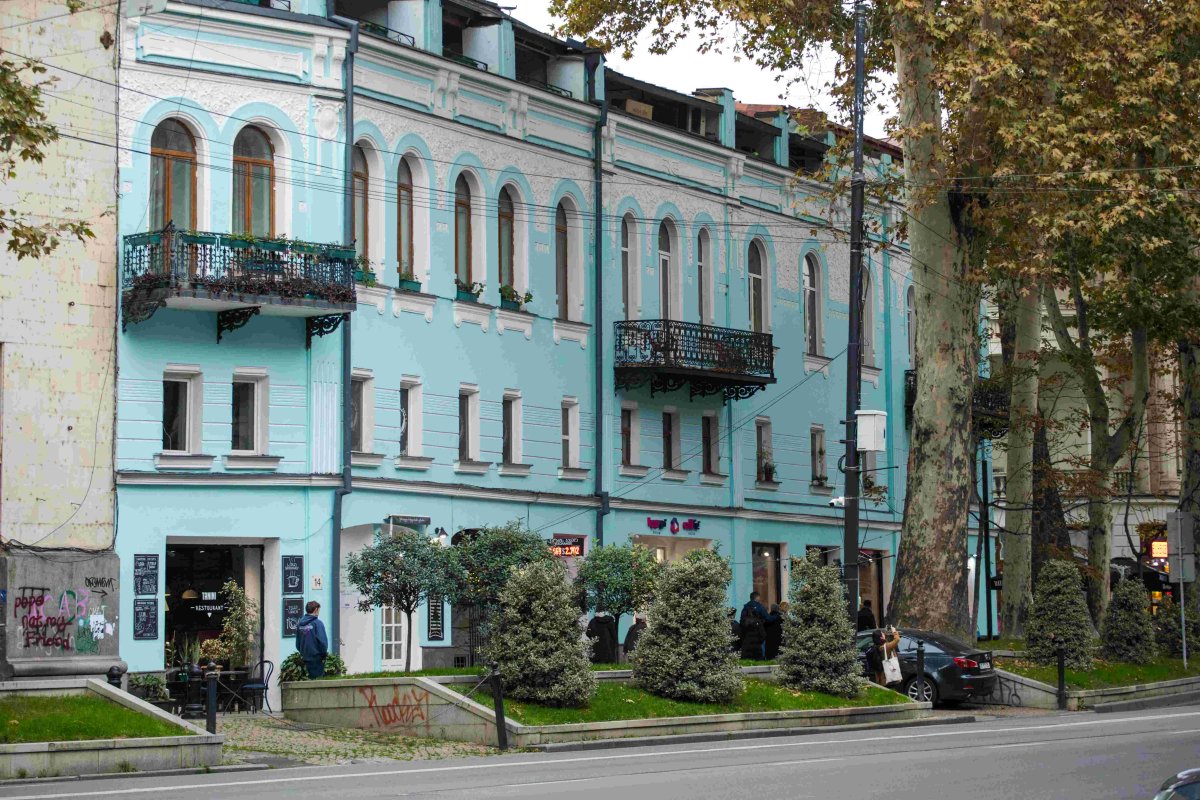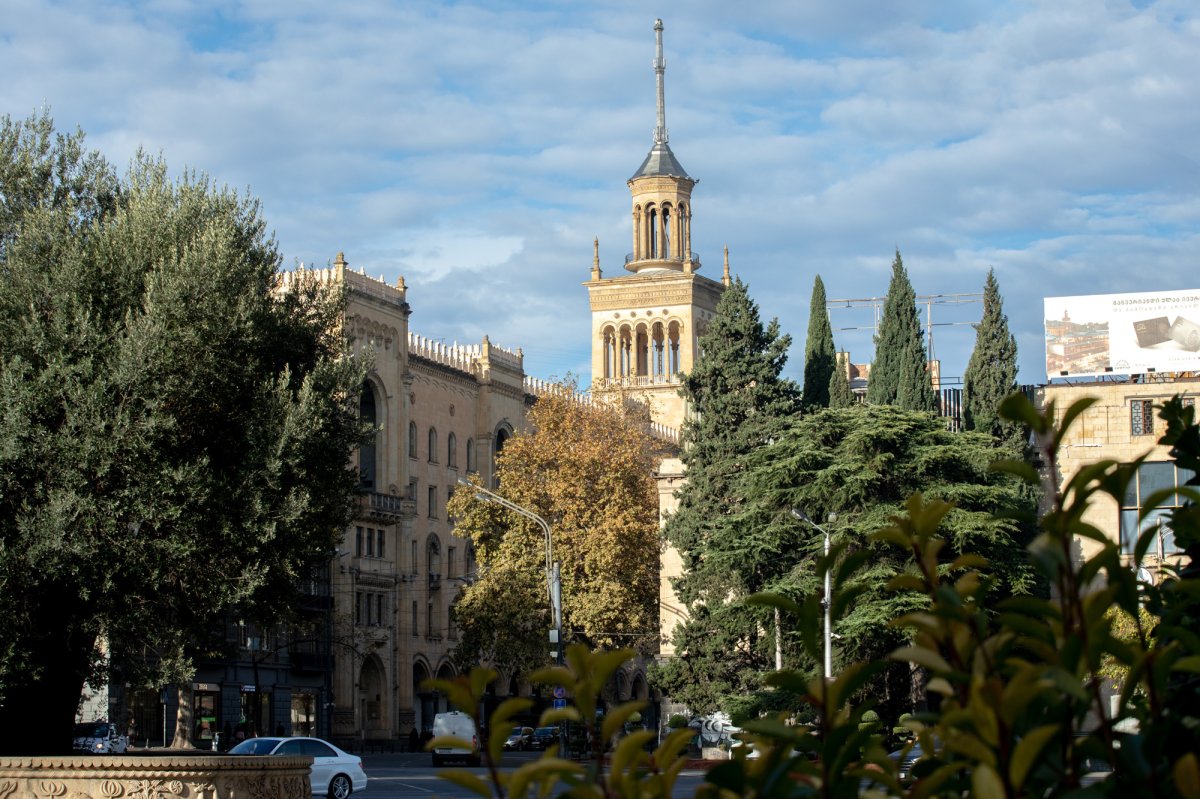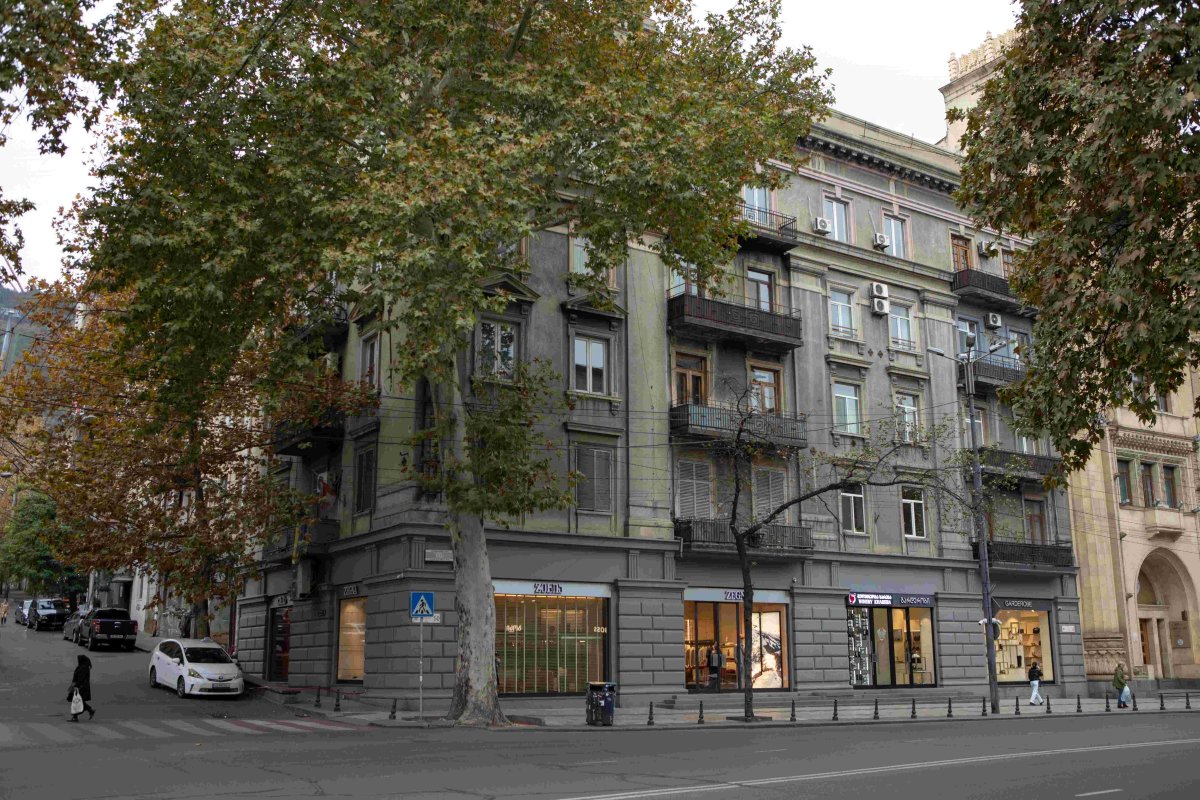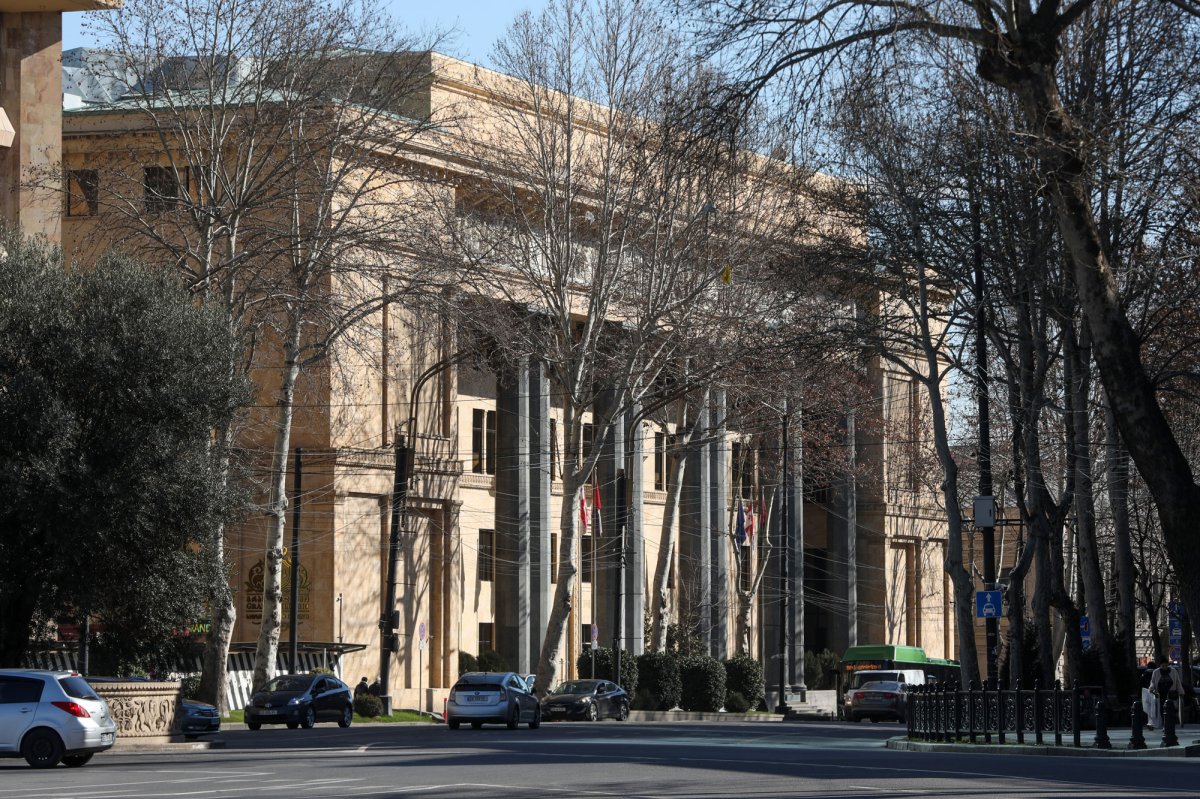
Information in details
The building located at 14, Rustaveli Avenue is one of the earliest historical buildings on the former Golovin Avenue that has survived to us. The house was built in the middle of the 19th century, probably in the 1860s-70s, but it came down to us in a remodeled form, which explains Belonging to different architectural styles or artistic tastes of the building. Archival photos confirm the fact of the reconstruction of the facade. At the beginning of the 20th century, it seems that the classicist facade of the building was "changed" to the modern "Art Nouveau" popular at the time. They were held on the style line and decorated with sculptural elements and decorative motifs characteristic of the given architectural style. The arched windows of the third floor are followed along the entire length of their signature arch-shaped, free-drawn decorative sculpture of a plant motif, which seems to be "hanging" on the upper part of the wall. On the side of the inner yard, there are fragments of the old balcony resting on wooden Doric columns. On the other hand, the building preserves its original planning and is a three-story building in the shape of the Latin letter "U", which, due to its location, still plays an important role in the development of one of Tbilisi's central avenues. The building, standing at the junction of two streets, Rustaveli Avenue and Besik Street, looks at the environment from a wide angle. The facade of the house is interesting, on the side of the avenue, in the corner adjacent to the massive building of the communication (12, Rustaveli Ave.), the building seems to "break", so that the small plane of the house enters the depth like a thumb. With the facade on the side of Besik Street, from a distance, the building resembles a trapezoid, as if it comes out on the avenue with a wide front, and goes deep with the side wings. This peculiar effect reveals an interesting urban planning concept in itself. The artistic-stylistic solution of the art nouveau facade and the unified structural concept of the building represent the undeniable artistic value of the building and place it in the visible line of valuable historical buildings from the point of view of the cultural heritage of Tbilisi.


 თბილისი, Shota Rustaveli Ave N14
თბილისი, Shota Rustaveli Ave N14
 41.6988145, 44.7975137
41.6988145, 44.7975137





